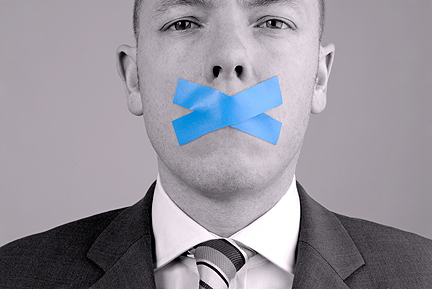
The news has been all abuzz with the actions taken by the
NBA to ban Donald Sterling, the owner of the Los Angeles Clippers, for a
racially charged conversation that went viral this past week. The Clippers and
the NBA stood to lose a boatload of money in advertising revenue and a lot more
in credibility if they stood by the outspoken owner. The trending news is all
about bigotry, but this was a business decision. What do you do when an
employee does the wrong thing? Does firing them solve the problem or is there
more to keeping your business brand untarnished in the equation?
If you have a Human Resources department, they are charged
with making sure that everyone understands the terms of their employment and
defining the lines that should not be crossed. When the line is crossed, you
may have a corporate lawyer that will advise you to keep from doing any further
damage to your corporation. In marketing and communications, we are charged
with promoting the company brand. When an employee does the wrong thing, that
brand image is in jeopardy. Our job goes beyond definition of good behavior and
legal damage control. The job of marketing is to change the minds of customers
and highly influential people when something goes wrong. We are there to guide
them past the trouble and to get them to believe in your brand once again.
How do you rebuild the reputation of the company when
something goes wrong? Here are some basic steps to take:
First, admit to the problem. Today there are so many ways
that the missteps of someone are seen by all. Remember that Donald Sterling
made his racial comments over the phone in a private conversation. Someone was
recording it and passed it on to the gossip magazine TMZ. You don’t need a
celebrity gossip web site to pick up your comments to be damaging. You could be
in the same kind of hot water if an employee says something inflammatory to a
customer in an email, posts an inappropriate photo wearing your company apparel
on social media, or is seen in a video (they are all around us) doing something
dishonest. The reality is that eyes and ears are all around us. There is
nothing to be gained by trying to cover up what can quickly be seen by masses
of people. Admit to the failure and commit to make it right.
Secondly, pledge to making sure the public – and
particularly your customers - know the company is taking steps to make sure
this sort of thing doesn’t happen again. People are forgiving if they believe
you are sincere about fixing the problem. That may require you to go
face-to-face with your customers. A corporate statement begging forgiveness may
be necessary, but this sort of communication is best when it is done in person.
Thirdly, emphasize the good things the company is doing
beyond damage control. When the lawyers have picked up their briefcases and
left the building, marketing has to rebuild the reputation of the company. Get
good news out in the public’s eye. The truth is, most news cycles are very
short. Even though you may be in the midst of a very painful time in your business,
know that it will pass. You can help bury it if you feed a steady diet of good
news to the press. Promote your charitable causes. Emphasize new contracts or any
other optimistic business news. Update the public on promotions in the company.
Push the positive.
Beyond getting rid of a bad apple employee, marketing has to
restore faith in the company brand. It is imperative that there be a trustful
relationship between your company and your customers. If not, your brand will
suffer.
__________________
Photo by Lanmeyer